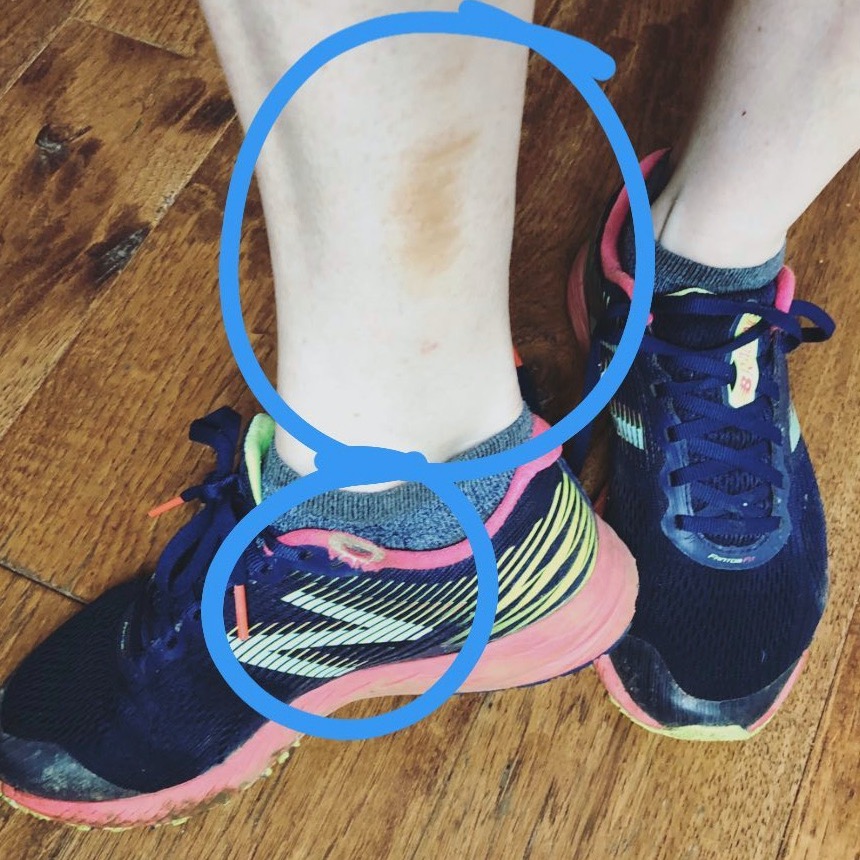Ever get back from a run and wonder why the insides of your legs are so scuffed and muddy? Maybe this even happens while you walk? On the surface level, it can lead to some extra scrubbing in the shower or wear-and-tear on the shoes, but the “heel whip” that causes you to kick the inside of your leg has been shown to be associated with increased risk of tibial stress fractures, achilles tendonitis, plantar fasciitis, and other injuries.
Here are the top 3 things to blame for kicking yourself:
1. YOUR FEET
Collapsing at the feet generally means overpronating. Pronation is a normal part of the gait cycle. However, re-supinating is also important to get the foot back to a stable position so it can efficiently push off. When this doesn’t happen on time, it can mean that your feet are weak or hypermobile, but not always. Sometimes over-pronating can come from limited ankle range of motion (dorsiflexion) or limited great toe extension. We compensate by collapsing inward to “get around” the limited motion. As we get toward the end of the stance phase and get ready to toe-off, the resultant forces cause the heel to “whip” inward, thus the brushing of your foot against the other leg.
2. UP THE CHAIN
Weakness in the stabilizers of the hip can cause a collapsing of the hips, knees, and feet during the shock-absorption phase of gait. This contributes to the foot pronation that we mentioned above. This is why it’s important to know what the source of your pronation is because it’s often not a simple solution of getting arch supports or stability shoes. If your foot/ankle is still tight or your hips are still weak, you’re not solving the right issue.
Another source of heel whip at the hip is a tight TFL (the muscle at the front of your hip that attaches into the ITB), a tight lateral hamstring, or a tight lateral gastroc (calf muscle).
Finally, things that cause your pelvis to rotate while you run such as limited hip extension or limited thoracic rotation (the sway or rotation of the pelvis makes up for the lost motion elsewhere), can cause you to kick the inside of your leg.
3. YOUR RUNNING FORM
Even if you work on your specific limitations, you may end up using the same old gait pattern. When we’re looking to change your running pattern, we prescribe drills and ONE simple cue while you run to help change the motor pattern. For this issue, we often work on knee drive. Increasing knee drive during your swing phase can help set you up for better alignment and force attenuation when your foot hits the ground.
WHEN KICKING YOURSELF IS NOT A PROBLEM
It’s important to note that muddy or scuffed inner legs are not always an issue. When we run on trails, we are constantly adapting to the changing surface. To do so, we use both our foot/ankle and our hips. This might mean that alignment is not always perfect as we run over the uneven ground. Chances are, you’re going to need a little extra scrubbing after a trail run, no matter how good your running form is.

